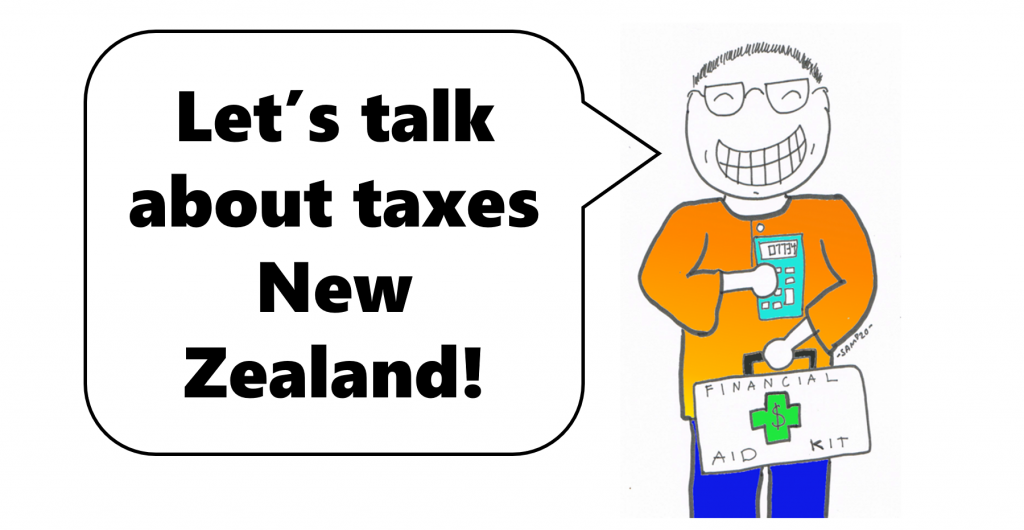
Alright, this one is for all of you hard-working, tax paying Kiwis out there.
Let’s talk about tax rates first, because boy, oh BOY do lots of folks get this wrong.
So first off, let me start off by saying that NZ tax is pretty easy and straightforward. Most folks don’t have to even worry about filing a tax return at the end of each year, since this is taken care of for us thanks to the PAYE (pay-as-you-earn) system. If you are self-employed or have a company, filing your taxes online is stupendously simple and unless you are pressed for time/headspace you can do this on your own.
But even then, people still get their taxes wrong.
So let’s kick off this article by answering this one question:
How does the tax scale rate in NZ work?
Does this look familiar? This is the legendary scale rate that all individuals in NZ are subject to. Really. It doesn’t matter if you are employed, self-employed, have a business, are on the benefit, etc etc etc – EVERYONE is subject to this exact, same scale rate.
Income here means income from self-employed sources, employment and (if certain conditions are met) even CAPITAL GAINS (but that’s a subject for a different time).
How the scale rate works is that you pay 10.5% on the first $14,000 of income, then 17.5% for the next $34,000, then 30% on the next $22,000 and finally anything you earn over $70,000 gets taxed at 33%.
Confused? Here’s an example of an average earner’s tax rate:
Kiara earns $55,000 from her job in an accounting firm. She pays 10.5% taxes on her first $14,000 – which equates to $1,470. Then, the next $34,000 is taxed at 17.5% which is $5,950 and finally the remaining $7,000 of income is taxed at 30% which is $2,100. In total she has tax to pay of $9,520.
| Tax Rate | Income taxed | Tax to pay |
| 10.50% | 14000 | 1470 |
| 17.50% | 34000 | 5950 |
| 30% | 7000 | 2100 |
| 33% | 0 | 0 |
| TOTAL | 55000 | 9520 |
| Effective Tax Rate | 17% |
When we put it all together – Kiara only has an effective tax rate of 17% ($9,520 of tax divided by $55,000 of income times 100). Even though she is well into the 30% tax bracket she is NOT paying 30% on all her taxes.
Let’s take another example, let’s look at this high roller’s tax rate over here:
Mahmud is a General Practitioner who works on contract with the DHB. He earned $210,000 in the last financial year. He pays $1,470 tax on his first $14,000 earned and $5,950 tax on the next $34,000 (much like Kiara). For the next $22,000 he pays 30% of taxes which is $6,600. Finally, he has $140,000 income remaining which is taxed at the 33% tax rate which is $46,200. In total, Mahmud has tax to pay of $60,220:
| Tax Rate | Income taxed | Tax to pay |
| 10.50% | 14000 | 1470 |
| 17.50% | 34000 | 5950 |
| 30% | 22000 | 6600 |
| 33% | 140000 | 46200 |
| TOTAL | 210000 | 60220 |
| Effective Tax Rate | 29% |
So as we can see, Mahmud’s effective tax rate is 29% ($60,220 divided by $210,000 times 100) even though a big chunk of his income is in the 33% bracket.
Tl;Dr this article about tax rate?
Basically – if you are in a higher income tax bracket, it doesn’t mean that you are paying all your taxes at that higher rate. In fact, if your income is in the 33% tax bracket, you are very likely to be paying an effective tax rate which is much lower than that.
So that pretty much sums individual tax rates in NZ.
In our next article, we will look at tax codes used by employers and how that affects your taxes!

Peter
admin